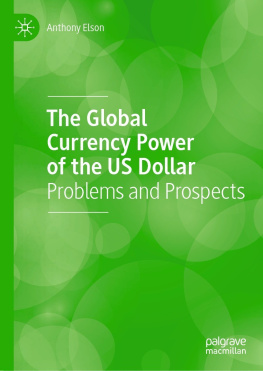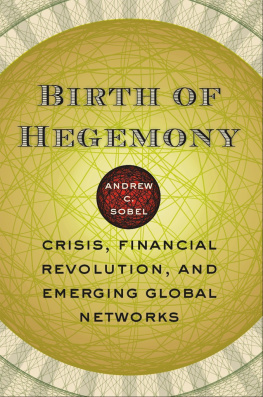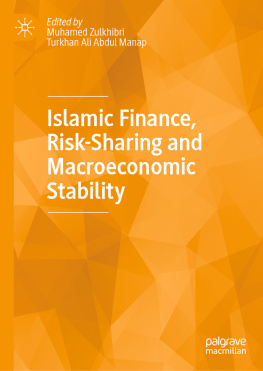World Economic and Financial Surveys Global Financial Stability Report
The Quest for Lasting Stability, April 2012

International Monetary Fund
Washington, D.C.
2012 International Monetary Fund
Cataloging-in-Publication Data
Joint Bank-Fund Library
Global financial stability report Washington, DC :
International Monetary Fund, 2002
v. ; cm. (World economic and financial surveys, 0258-7440)
Semiannual
Some issues also have thematic titles.
ISSN 1729-701X
1. Capital market Development countries Periodicals.
2. International finance Periodicals. 3. Economic stabilization
Periodicals. I. International Monetary Fund. II. Series: World economic and financial surveys.
HG4523.G563
ISBN 978-1-61635-247-9
ISBN: 12282-9781475583793
DOI: 10.5089/9781475583793.082
Please send orders to:
International Monetary Fund, Publications Services
P.O. Box 92780, Washington, DC 20090, U.S.A.
Tel.: (202) 623-7430 Fax: (202) 623-7201
E-mail:
www.imfbookstore.org
www.elibrary.imf.org
CONTENTS
Statistical Appendix
[Available online at www.imf.org/external/pubs/ft/gfsr/2012/01/pdf/statapp.pdf]
Boxes
Tables
Figures
Preface
The Global Financial Stability Report (GFSR) assesses key risks facing the global financial system. In normal times, the report seeks to play a role in preventing crises by highlighting policies that may mitigate systemic risks, thereby contributing to global financial stability and the sustained economic growth of the IMFs member countries. Against a background of continuing challenges to global financial stability, the current report highlights how risks have changed over the past six months, traces the sources and channels of financial distress with an emphasis on sovereign vulnerabilities and contagion risks stemming from bank deleveraging, investigates the resilience of emerging markets, examines the implications of recent reforms and sovereign stress for safe assets, and assesses the growing financial costs that longevity risk poses for financial and fiscal institutions.
The analysis in this report has been coordinated by the Monetary and Capital Markets (MCM) Department under the general guidance of Jos Vials, Financial Counsellor and Director. The project has been directed by Jan Brockmeijer and Robert Sheehy, both Deputy Directors; Peter Dattels and Laura Kodres, Assistant Directors; and Matthew Jones, Advisor. It has benefited from comments and suggestions from the senior staff in the MCM department.
Individual contributors to the report are: Abdullah Al-Hassan, Sergei Antoshin, Serkan Arslanalp, Ana Carvajal, Eugenio Cerutti, Jorge A. Chan-Lau, Ken Chikada, Nehad Chowdhury, Sean Craig, Jihad Dagher, Reinout De Bock, Giovanni DellAriccia, Frank Eich, Michaela Erbenova, Luc Everaert, Maximilian Fandl, Jeanne Gobat, Tommaso Mancini Griffoli, Vincenzo Guzzo, Kristian Hartelius, Sanjay Hazarika, Eija Holttinen, Anna Ilyina, Patrick Imam, Silvia Iorgova, William Kerry, John Kiff, Michael Kisser, Peter Lindner, Estelle Xue Liu, Andr; Meier, Paul Mills, Srobona Mitra, Hanan Morsy, S. Erik Oppers, Jukka Pihlman, Esther Perez Ruiz, Marta Snchez Sach, Christian Schmieder, Jochen Schmittmann, Alasdair Scott, Katharine Seal, Tiago Severo, Mauricio Soto, Mark Stone, Tao Sun, Narayan Suryakumar, Takahiro Tsuda, Nico Valckx, and Chris Walker. Ivailo Arsov, Martin Edmonds, Oksana Khadarina, and Yoon Sook Kim provided analytical support. Gerald Gloria, Nirmaleen Jayawardane, Juan Rigat, and Ramanjeet Singh were responsible for word processing. Joanne Blake and Gregg Forte, of the External Relations Department, edited the manuscript, and the External Relations Department coordinated production of the publication.
This particular issue draws, in part, on a series of discussions with banks, clearing organizations, securities firms, asset management companies, hedge funds, standards setters, financial consultants, pension funds, central banks, national treasuries, and academic researchers. The report reflects information available up to March 30, 2012.
The report benefited from comments and suggestions from staff in other IMF departments, as well as from Executive Directors following their discussion of the GFSR on March 30, 2012. However, the analysis and policy considerations are those of the contributing staff and should not be attributed to the Executive Directors, their national authorities, or the IMF.
The following symbols have been used throughout this volume:
to indicate that data are not available;
to indicate that the figure is zero or less than half the final digit shown, or that the item does not exist;
- between years or months (for example, 200809 or JanuaryJune) to indicate the years or months covered, including the beginning and ending years or months;
/ between years (for example, 2008/09) to indicate a fiscal or financial year.
Billion means a thousand million; trillion means a thousand billion.
Basis points refer to hundredths of 1 percentage point (for example, 25 basis points is equivalent to of 1 percentage point).
n.a. means not applicable.
Minor discrepancies between constituent figures and totals are due to rounding.
As used in this volume the term country does not in all cases refer to a territorial entity that is a state as understood by international law and practice. As used here, the term also covers some territorial entities that are not states but for which statistical data are maintained on a separate and independent basis.
The boundaries, colors, denominations, and other information shown on the maps do not imply, on the part of the International Monetary Fund, any judgment on the legal status of any territory or any endorsement or acceptance of such boundaries.
Executive Summary
Recent important policy steps have brought some much-needed relief to euro area financial markets. As discussed in , sovereign spreads have declined, bank funding markets have partly reopened, and equity prices have recovered. Nevertheless, pressures on European banks remain, including from sovereign risks, weak euro area growth, high rollover requirements, and the need to strengthen capital cushions to regain investor trust. Together, these pressures have induced a broader drive to reduce balance sheet size. Analysis in this Global Financial Stability Report suggests that large EU-based banks could shrink their combined balance sheet by as much as $2.6 trillion (2.0 trillion) through end-2013, or almost 7 percent of total assets. Although subject to considerable uncertainty, our estimate is that about one-fourth of this deleveraging could occur through a reduction in lending, with the remainder coming largely from sales of securities and noncore assets. Under the baseline, the impact on euro area credit supply is estimated at about 1.7 percent of present credit outstanding. Some balance sheet reduction by individual banks is necessary because high leverage is no longer supported by either markets or regulators and some activities are no longer viable. But the potential consequences of a synchronized and large-scale deleveraging warrant supervisory efforts to avoid serious damage to asset prices, credit supply, and economic activity in Europe and beyond.
Against this backdrop, European policymakers need to build on recent improvements to implement the agreed reforms swiftly. Avoiding fresh setbacks will be critical, especially on the difficult path ahead, which is fraught with political and implementation risk. The recent decision to combine the European Stability Mechanism with the European Financial Stability Facility is welcome and, along with other recent European efforts, will strengthen the European crisis mechanism and support the IMFs efforts to bolster the global firewall. But to achieve lasting stability and move to a path that inspires confidence, these crisis management policies need to be anchored with a road map of further financial and fiscal integration of the Economic and Monetary Union.









